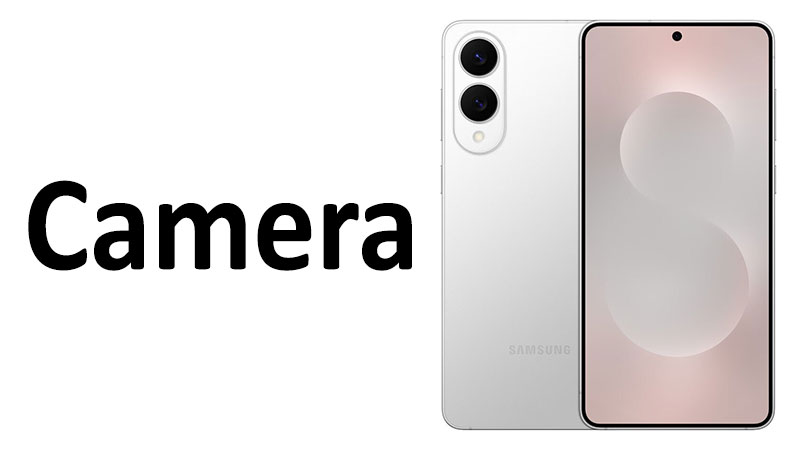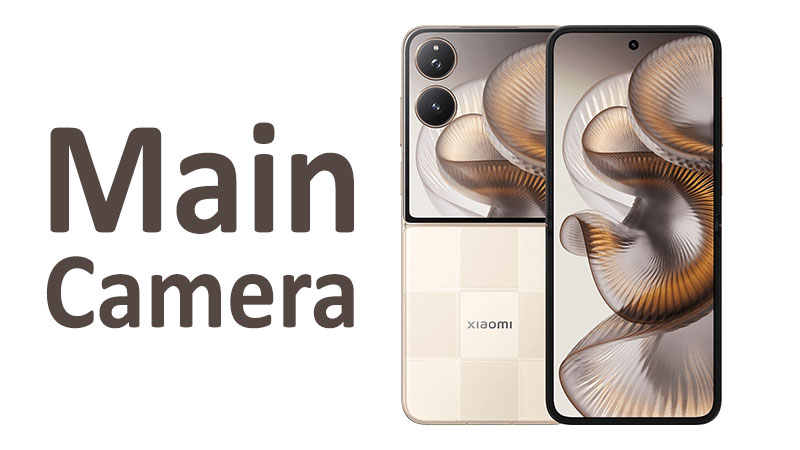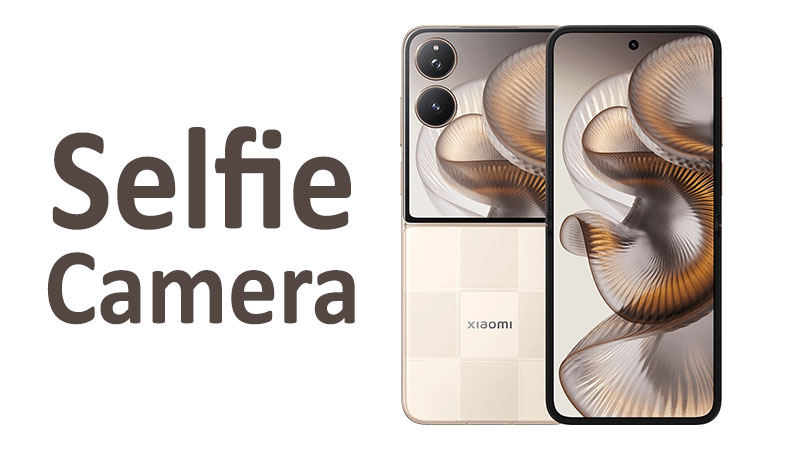The Samsung Galaxy S25 Edge camera represents a major leap in mobile photography. It introduces cutting-edge sensor technology and advanced processing. This comprehensive review dives deep into its specifications and real-world performance. We will explore how these features translate into stunning photos and videos. Understanding the camera system is crucial for potential buyers. It helps determine if this flagship device meets your creative needs. We will cover everything from the massive main sensor to the versatile video modes. This article aims to be the definitive resource on the S25 Edge’s imaging prowess.
Technical Specifications Deep Dive
The Galaxy S25 Edge features a powerful dual-camera array on the rear. This setup focuses on delivering extreme detail and broad versatility. The specifications reveal Samsung’s commitment to hardware excellence. It’s important to analyze each component individually.
The Groundbreaking 200 MP Wide Sensor
The primary camera is undoubtedly the star of the show. It boasts an incredible 200 MP resolution. This sensor is paired with a fast f/1.7 aperture lens. This wide aperture allows maximum light intake. The lens has a 24mm equivalent focal length. This is a classic and versatile “wide” field of view.
The sensor itself is physically large, measuring 1/1.3 inches. This size helps capture more light and dynamic range. Each pixel has a size of 0.6µm. This is a common size for such high-resolution sensors. However, the camera uses advanced pixel-binning technology. This technique groups multiple small pixels together. It effectively creates larger “super-pixels.” This significantly boosts low-light sensitivity.
Furthermore, the main sensor includes multi-directional Phase Detection Autofocus (PDAF). This advanced system ensures lightning-fast and accurate focusing. Optical Image Stabilization (OIS) is also integrated. OIS mechanically stabilizes the lens. This dramatically reduces blur from hand shake. This combination of hardware ensures crisp images even in challenging conditions. The 200 MP sensor sets a new standard for detail in mobile photography.
The Versatile 12 MP Ultrawide Lens
Accompanying the main sensor is a 12 MP ultrawide camera. This lens offers a 13mm equivalent focal length. This provides an extremely wide field of view. It is perfect for capturing sweeping landscapes or large group shots. The ultrawide lens uses an f/2.2 aperture. This is fast enough for most daytime scenarios.
The sensor size here is 1/2.55 inches. The pixels are larger than the main sensor’s individual pixels, at 1.4µm. This means the ultrawide camera captures light efficiently. It does this without relying heavily on pixel-binning. The lens also features PDAF for precise focus. This is a key upgrade over older fixed-focus ultrawide lenses. The S25 Edge photography system gains significant flexibility from this lens. It expands the creative possibilities for the user.
High-Fidelity 12 MP Selfie Camera
The front-facing camera is equally impressive. It features a 12 MP sensor with a 26mm wide-angle lens. The aperture is f/2.2, which provides adequate light gathering. Its sensor size is 1/3.2 inches. The individual pixel size is 1.12µm. This is a good balance for a front-facing unit.
Crucially, this S25 Edge selfie camera uses dual pixel PDAF. Dual pixel technology means every pixel is used for both imaging and focusing. This results in incredibly quick and reliable autofocus for selfies. It ensures your face stays sharp even if you move slightly. The front camera is optimized for clear video calls and detailed self-portraits.
Image Quality and Performance Analysis
The specifications are only half the story. Real-world performance determines the true value of the camera system. The Galaxy S25 Edge camera excels in a variety of photographic situations.
The 200 MP Wide Sensor Experience
In standard lighting, the 200 MP sensor captures phenomenal detail. By default, the camera utilizes pixel-binning. It combines 16 pixels into one large pixel. This results in a highly detailed 12.5 MP image. This method significantly improves image quality. It enhances dynamic range and reduces noise.
When needed, users can switch to the full 200 MP mode. This mode is ideal for specific uses. It is perfect for large prints or heavy cropping. The sheer amount of data captured is staggering. This allows for extraordinary post-capture flexibility. The S25 Edge photography captures minute textures beautifully. Even fine details, like brickwork or hair strands, remain sharp.
Low-light performance is a major strength. The large sensor size and the 16-to-1 pixel binning work together. They pull in significantly more light than previous generations. This results in brighter, clearer night photos. Image noise is minimized through intelligent software processing. The fast f/1.7 aperture contributes significantly to this performance. The OIS helps keep the shutter open longer without introducing motion blur. This makes the S25 low-light performance truly exceptional.
Ultrawide Photography Mastery
The 12 MP ultrawide lens delivers stunning results. Its 13mm field of view captures a vast scene. It is perfect for architectural shots and wide vistas. The quality is consistent across the frame. Samsung has dramatically improved lens distortion correction. This minimizes the “fisheye” look common in older ultrawide cameras. Lines remain straight even near the edges of the photo.
Color science is well-matched between the wide and ultrawide lenses. This consistency is vital for seamless photo sets. The images produced are vibrant and true-to-life. The ultrawide camera’s PDAF ensures sharp results. This makes it reliable for action shots or street photography. This wide-angle lens is more than just a secondary option. It is a powerful creative tool for Galaxy S25 Edge photography.
Portrait and Computational Photography
The S25 Edge relies on its 200 MP main sensor for portrait mode. It uses depth information derived from the wide sensor’s dual-pixel data. This creates a natural-looking background blur, or bokeh effect. Edge detection is highly accurate. It cleanly separates the subject from the background.
The “Best Face” feature is a standout software tool. It automatically selects the best moment from a short burst of photos. This is particularly useful for group shots. Computational HDR is also a standard feature. It automatically merges multiple exposures. This ensures balanced shadows and highlights. The result is a high dynamic range image that looks professional. Panorama mode stitches together high-resolution images. It creates stunningly wide-format landscapes.
Advanced Videography Capabilities
The Samsung Galaxy S25 Edge sets a high bar for smartphone videography. It offers resolution and frame rates previously reserved for professional equipment. The camera system supports multiple high-end video standards.
8K and High-Frame-Rate 4K Shooting
The S25 Edge can record video at a staggering 8K resolution at 30 frames per second (fps). This resolution captures four times the detail of 4K. It is ideal for future-proofing your content. This massive resolution also allows for creative cropping during editing. You can extract high-resolution still images directly from the 8K footage.
For smoother, more versatile video, 4K recording is available. The camera supports 4K at 30 fps, 60 fps, and an impressive 120 fps. The 120 fps option is perfect for slow-motion effects. It maintains incredible detail while slowing down the action four times. This flexibility makes the S25 Edge a top-tier tool for video creators.
10-bit HDR and Video Stabilization
A critical feature is 10-bit HDR video recording. This feature captures over a billion colors. It provides a vastly superior color depth compared to standard 8-bit video. The increased color information leads to smoother gradients. It also offers richer, more realistic footage. This is especially noticeable in bright, high-contrast scenes.
Video stabilization is excellent across all modes. It uses a combination of OIS and electronic stabilization (EIS). This hybrid approach results in gimbal-like smoothness. Even handheld footage remains remarkably steady. The 4K@120fps mode benefits greatly from this advanced stabilization. It ensures professional-grade results without bulky extra gear.
Selfie Video Excellence
The front camera supports 4K video recording at both 30 fps and 60 fps. This is a significant feature for vloggers and content creators. It ensures high-quality video for social media and video calls. The dual pixel PDAF ensures your face is always in sharp focus. This is crucial when recording yourself on the go. The 1080p recording option is also available at 30 fps and 60 fps. This offers smaller file sizes when high resolution is not strictly necessary.
Specialized Camera Comparisons and Context
To fully appreciate the S25 Edge, we must compare it to its peers. Contextualizing its performance against predecessors and competitors is important. This helps highlight where Samsung truly innovates.
S25 Edge vs. S24 Edge (or Predecessor)
The jump from the S24 Edge to the S25 Edge is notable. The biggest difference is the increased utilization of the 200 MP sensor. While the S24 may have had a similar sensor, the S25 Edge utilizes enhanced processing. This results in superior noise reduction and better color accuracy. Low-light performance is perceptibly better in the S25 Edge. Images show less digital noise and better preservation of shadow detail.
In video, the 8K@30fps upgrade is substantial. The S24 Edge might have capped 8K at 24fps. The higher frame rate provides smoother, more cinematic 8K video. The S25 Edge specs show refinements across the board. The improved PDAF on the ultrawide camera is also a welcome upgrade. This makes the secondary lens much more reliable.
S25 Edge vs. Key Competitors
The S25 Edge competes directly with top-tier flagships. These include the latest iPhone Pro and Google Pixel Pro models. The S25 Edge’s major advantage is its raw resolution. Its 200 MP sensor is larger than the main sensors of most rivals. This allows it to capture more potential detail.
Competitors often focus on computational photography. The Pixel, for instance, uses extensive AI for image enhancement. Samsung expertly blends both. The S25 Edge uses its massive sensor for excellent raw data. It then applies sophisticated AI processing. This combination results in superb image quality. The 10-bit HDR video recording capability is also a key differentiator. It gives the S25 Edge an edge in professional video work. The ultrawide lens’s inclusion of PDAF also often surpasses rival specifications. Many competitors still use fixed-focus ultrawide lenses.
User Experience, Pros, Cons, and Buyer Insights
A great camera system requires an excellent user interface. The shooting experience with the S25 Edge is polished and intuitive. Buyers should weigh the advantages against any limitations.
User Interface and Key Features
The camera app is fast and highly responsive. Switching between the wide and ultrawide lenses is instantaneous. Samsung’s Pro mode offers extensive manual control. Users can adjust ISO, shutter speed, focus, and white balance. This gives advanced users total creative freedom. The interface remains clean and easy to navigate for beginners.
The included features like “Best Face” and Panorama are easy to access. HDR works automatically and seamlessly in the background. The LED flash is bright. It acts as a fill light when natural lighting is insufficient. This results in balanced images even at night. The system provides immediate image previews. This helps users quickly assess their shots.
Pros and Cons
Pros of the Galaxy S25 Edge Camera:
- Unmatched Detail: The 200 MP sensor provides exceptional resolution for cropping.
- Superb Low-Light Performance: Pixel-binning and OIS work together to minimize noise.
- Pro-Grade Video: 8K@30fps and 10-bit HDR provide industry-leading videography options.
- Fast Autofocus: Multi-directional PDAF ensures quick and reliable focus on all key lenses.
- Versatile Ultrawide: The 12 MP ultrawide with PDAF is both sharp and flexible.
Cons of the Galaxy S25 Edge Camera:
- Large File Sizes: Shooting in 200 MP mode creates massive image files. This quickly consumes storage space.
- No Dedicated Telephoto: The provided specs only list wide and ultrawide lenses. The absence of an optical zoom lens is a significant drawback for serious zoom photography. This will require reliance on digital cropping.
- Computational Reliance: Extreme detail often results from heavy software processing. Some users may prefer a more natural, less processed look.
Important Buyer Considerations
If you prioritize raw detail and video capability, this is an excellent choice. The 200 MP sensor is unrivaled for image resolution. The 8K and 4K@120fps options are perfect for video creators. However, buyers expecting a dedicated telephoto lens should take note. The S25 Edge, based on these specifications, relies on digital zoom from the 200 MP sensor. This is a crucial distinction from models that feature 3x or 10x optical zoom.
Consider your usage patterns. If you frequently print large photos, the 200 MP mode is a massive advantage. If you shoot content for online platforms, the 10-bit HDR video will make your content stand out. Storage management becomes essential with 8K video and 200 MP photos. You should consider purchasing a high-capacity storage option.
Conclusion
The Samsung Galaxy S25 Edge camera system is a testament to mobile imaging innovation. It brings professional-grade specifications to a consumer device. The combination of the massive 200 MP main sensor and the capable 12 MP ultrawide delivers exceptional results. Image quality is marked by stunning detail and excellent low-light performance. The OIS and advanced PDAF systems ensure sharpness and reliability.
For smartphone videography, the S25 Edge is a powerhouse. It offers 8K recording and superior 10-bit HDR color depth. This feature set rivals dedicated cameras. While the listed specifications omit a dedicated optical telephoto, its overall performance is stellar. The camera system provides incredible versatility for all levels of users.
For readers making an informed decision, consider your needs. If high-resolution video and low-light excellence are your priorities, the S25 Edge is a phenomenal choice. It is truly an industry leader in mobile imaging technology.
Frequently Asked Questions
What is the main camera resolution on the Samsung Galaxy S25 Edge?
The main wide camera boasts an impressive 200 MP resolution. This allows for exceptional detail and flexibility in cropping.
Does the S25 Edge support 8K video recording?
Yes, the camera system is capable of recording 8K video at 30 frames per second. This is ideal for high-resolution content creation.
What technology keeps the photos from being blurry?
The main wide camera uses Optical Image Stabilization (OIS). This mechanical stabilization system significantly reduces motion blur from handheld shaking.
What is the aperture of the main 200 MP lens?
The main wide lens has a fast f/1.7 aperture. This large opening allows more light to reach the sensor, which is vital for low-light performance.
Is the ultrawide camera fixed focus?
No, the 12 MP ultrawide camera features Phase Detection Autofocus (PDAF). This ensures sharp and accurate focus, unlike many fixed-focus ultrawide lenses.



